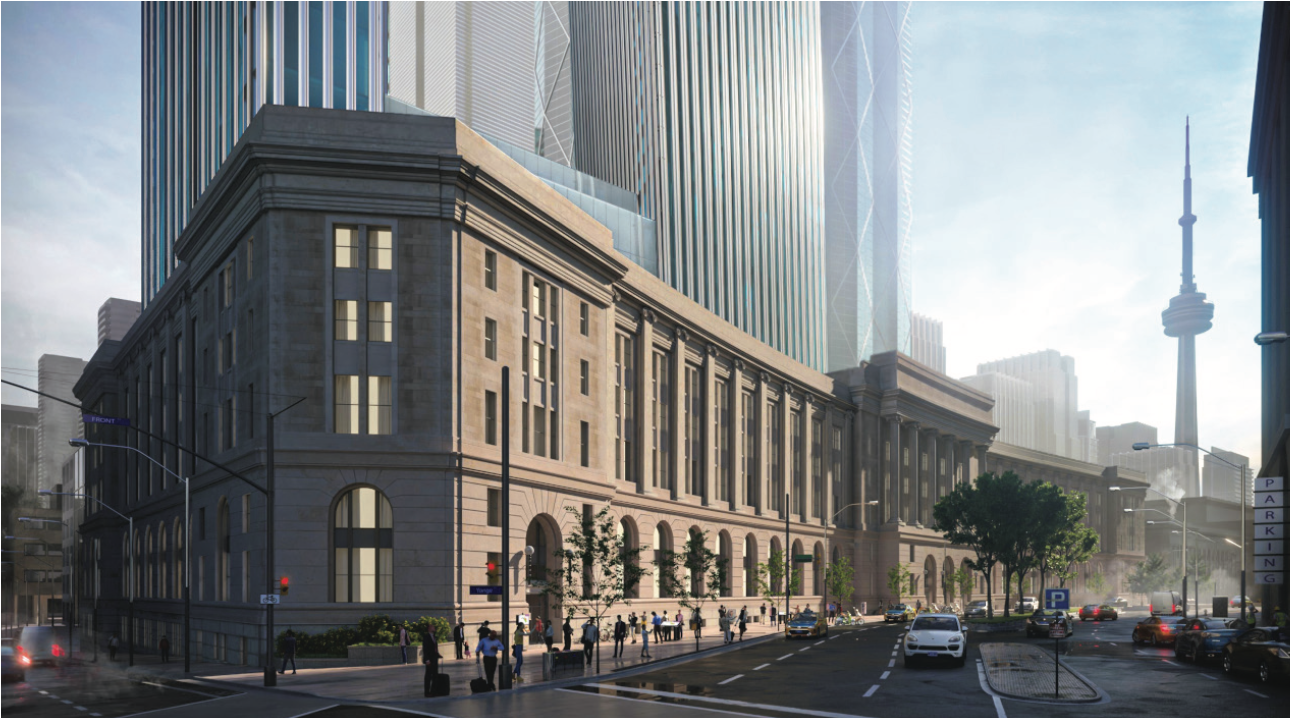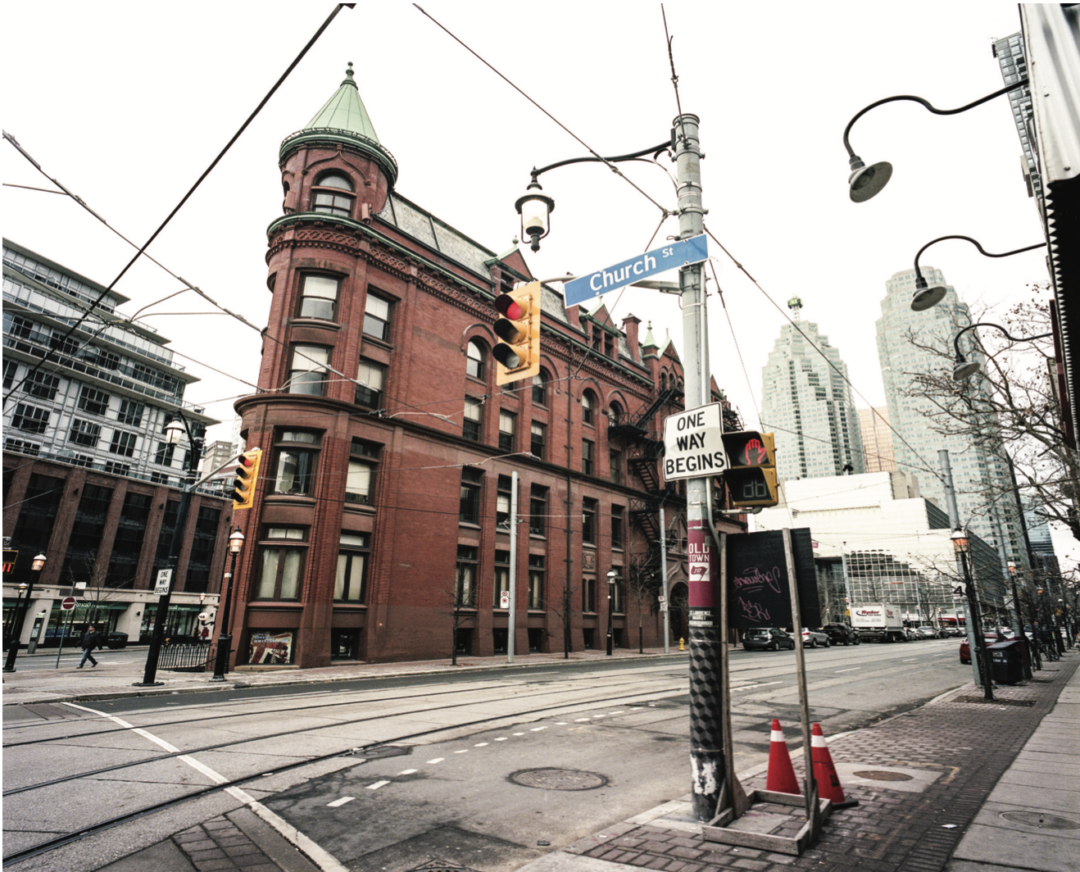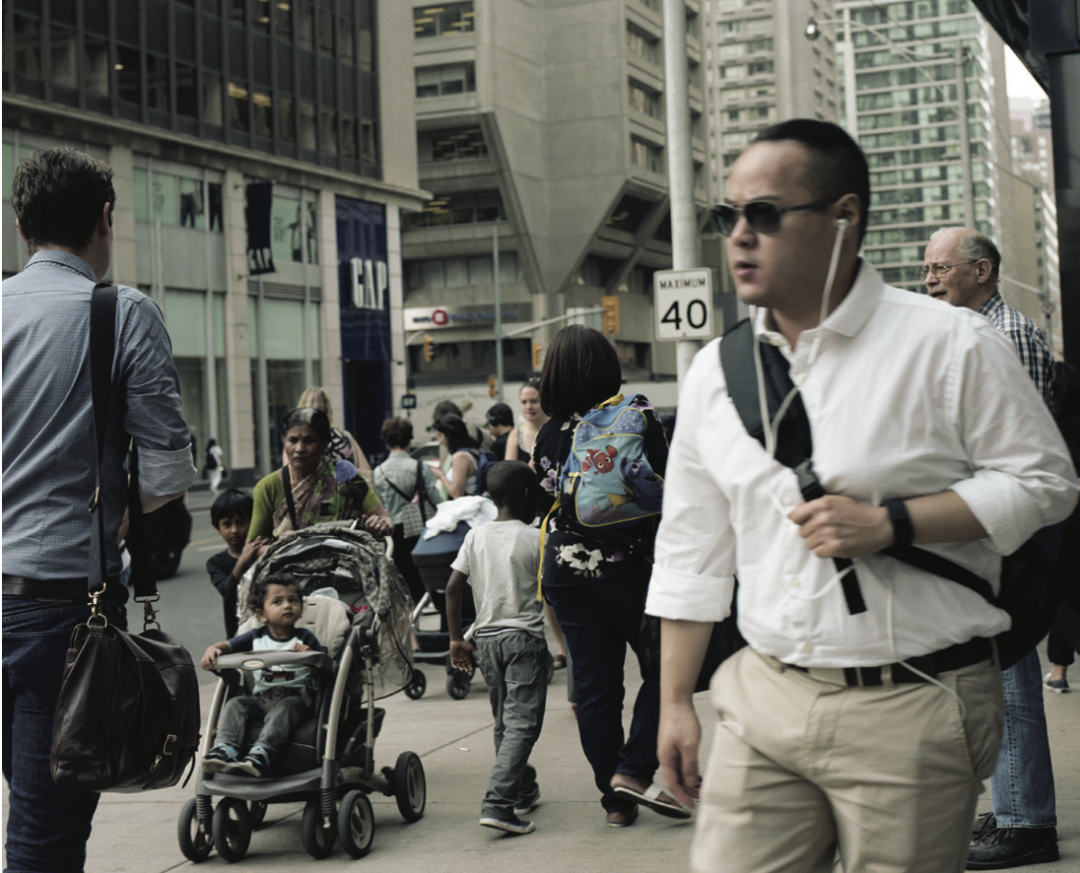By Andre Bermon

In a new series, the bridge is profiling construction projects and developers behind the multi-billion-dollar industry that’s changing the face of downtown Toronto.
This is part two of our examination of Larco Investments Inc., a B.C. real estate giant that now owns 1 Front Street West. (For part one, see the October edition).
“Exceptional development potential” were the chosen words by BMO Capital Markets to advertise 1 Front Street West, known as Toronto’s monumental Dominion Public Building.
The city’s former custom house turned federal office building in the coveted Financial District was not long on the open market. The two-acre heritage property was snatched up in March 2017 by Larco Investments Inc., Canada’s largest private real estate company, for $275.1 million.
It was an unusual purchase for a company coming off a major tax haven scandal – exposed in the 2016 Panama Papers – and a public relations fiasco over a proposed addition to the historic Chateau Laurier Hotel in Ottawa.
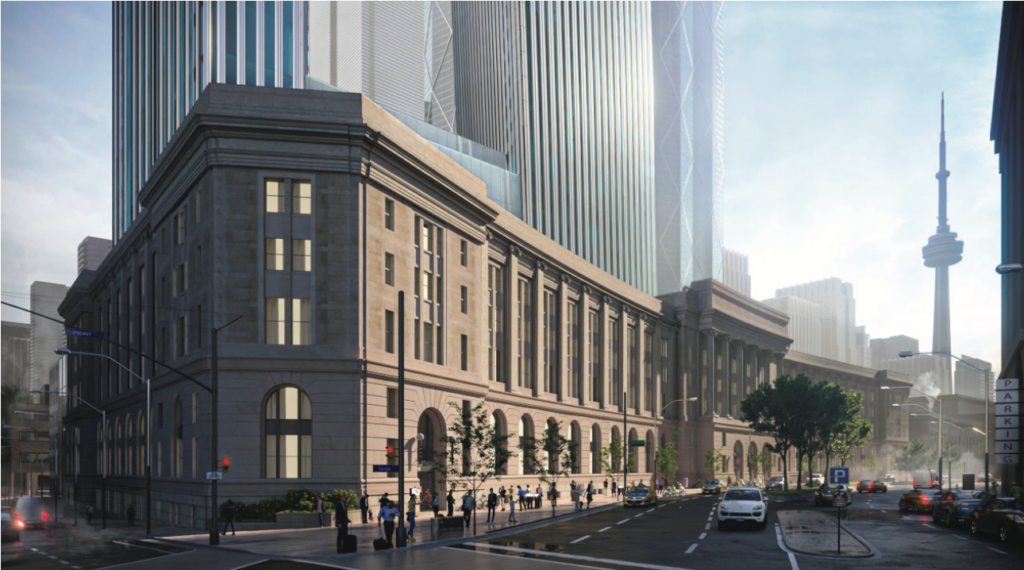
In July 2018, Larco submitted a development application proposing a dramatic reuse of the building: two high-rise structures, hotel and retail elements in a mixed-use project. City Planning initially refused the proposal, citing nonconformity with provincial and municipal planning tools and inadequate conservation methods to preserve heritage attributes.
A revised proposal, submitted by architectsAlliance on behalf of Larco in April 2020 and endorsed by the heritage consultancy firm ERA Architects, is now being recommended by Planning to City Council. The amended application retains the mixed-use two-tower concept but with certain heritage features conserved.
Why Planning was not more resolute in safeguarding the integrity of a Toronto landmark is suspect given the historic gravitas of the building. This is compounded by the additional concern as to why the federal government’s commitment to “obtaining the best value for Canadians” meant selling a major civic and cultural asset to a private developer?
According to public documents, the government’s asset management department had declared 1 Front Street West surplus in early 2015. The Dominion Public Building was eventually transferred to the Canada Lands Company Limited, a crown corporation used to sell federal real estate.
City Council became aware of the pending disposal when federal authorities approached City Planning about the building’s heritage potential. Because it was federally owned, 1 Front Street West was not subject to local heritage controls, including the Union Station Heritage Conservation District, a planning tool to guide development and protect historic buildings in the Financial District.
Regarded as both an exceptional example of Beaux-Arts classicism and a rare early 20th-century public works project, Council decided that upon transfer of the 93-year old building, a notice of intention to designate the DPB under Part IV of the Ontario Heritage Act would be served on the new owner.
Nowhere in the public exchange between City Planning and the federal authorities did Council display any interest in the building’s future, including the right of first offer to purchase the building.
On January 3, 2017, the property was transferred to the Canada Lands Co., which hired BMO Capital Markets to broker a sale. No bidding process or asking price was specified. Two months later, the property was sold to Larco Investments Inc.
Larco’s purchase of 1 Front Street West should have raised alarm within the heritage community, given the company’s controversial addition to the Chateau Laurier Hotel. But decades of being a semi-closed-off federal office building seems to have removed the Dominion Public Building from public consciousness. The grandiose monument, once open to citizens and lauded for its marble-clad, Corinthian-columned commerce room, known as the Long Room, had diminished in cultural memory.
Unlike more celebrated Toronto landmarks like St. Lawrence Market, Casa Loma and Old City Hall, 1 Front Street West got scant media attention when the property was sold. Even local neighbourhood associations, traditionally vocal about infringement on heritage, remained silent.
Once the site was under private ownership, the city was able to apply two heritage designations to it: one as an individual property and the other through the Union Station Heritage Conservation District. Both designations, passed by City Council on May 10, 2017, offered protections from interior and external alterations.
But the heritage laws passed to govern development in the city’s culturally sensitive Financial District turned out to be written by the very architectural firms behind the design of the DPB development.
The Union Station District Plan, adopted by City Council in 2006, laid out the guiding principles that were incorporated into the Union Station Heritage Conservation District the same year. Among several private architectural groups that prepared the District Plan were the two leading firms for the Larco project: architectsAlliance and ERA Architects.
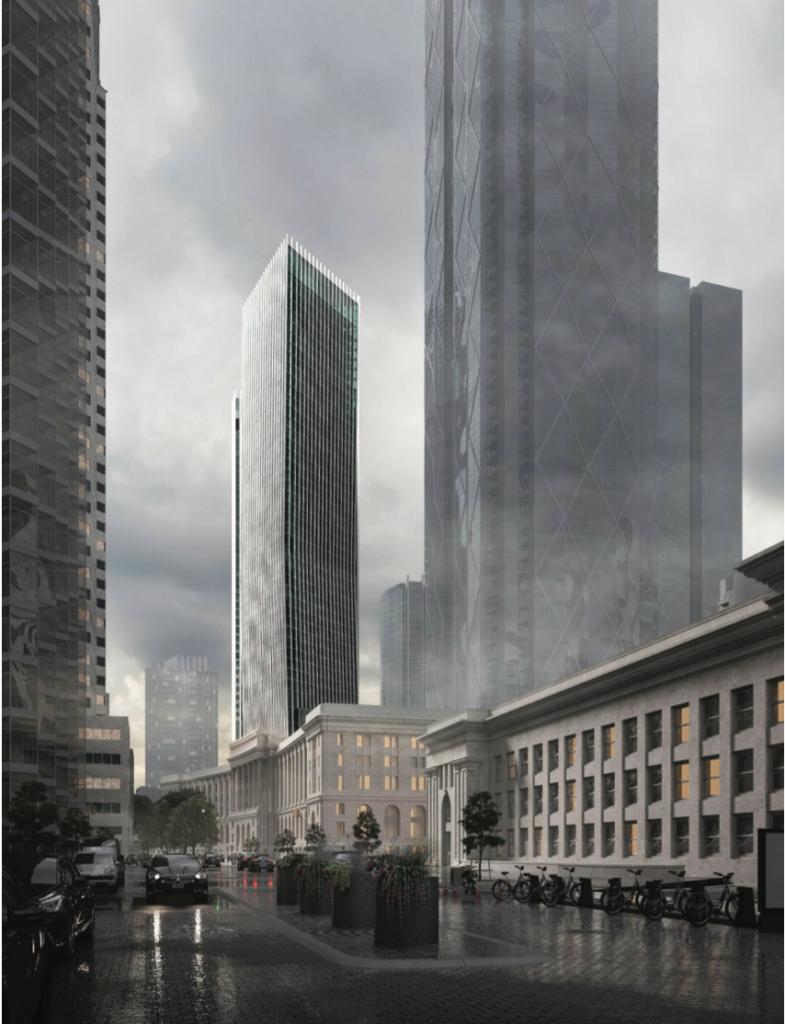
ERA Architects unabashedly endorsed Larco’s first failed bid to the City for the project, claiming the proposed modifications – the near complete alteration of the structure’s praised architectural façade along with mounting two high-rise towers – would “enhance the building’s heritage character.”
City Planning successfully rejected some of the more egregious alterations, but in the revised application was unable, or unwilling, to challenge Larco on the two-tower concept. Instead, using one of the few tools available to leverage the hubris of over-ambitious developers, planners suggested a hefty community benefits fee, known commonly as Section 37 money.
If Council approves the two 45- and 49-storey high-rises, complete with office, hotel, retail and residential units, the city would be paid $4.6M for capital repairs of Toronto Community Housing buildings and to provide “affordable housing.”
For a company owned by the billionaire Lalji family, the proposed cash offering pales in comparison to the hundreds of millions of dollars revealed to have been routed to offshore holdings by Larco and its subsidiaries—taxable money that could have gone a long way to helping Canada’s under-housed.
Larco’s ties to the federal government are well documented. Why the landmark Dominion Public Building was sold to the private company in such haste invites speculation. The three brothers who rule over Larco’s real estate empire had likely been lobbying for 1 Front Street West for some time, waiting for a pliable government.
The loss to the city’s cherished history is incalculable. To quote an anonymous comment about the proposed development,
“What a godawful pair of penetrating shards into this beautiful, historic building. It’s like the building has been stabbed to death by a pair of daggers.”


